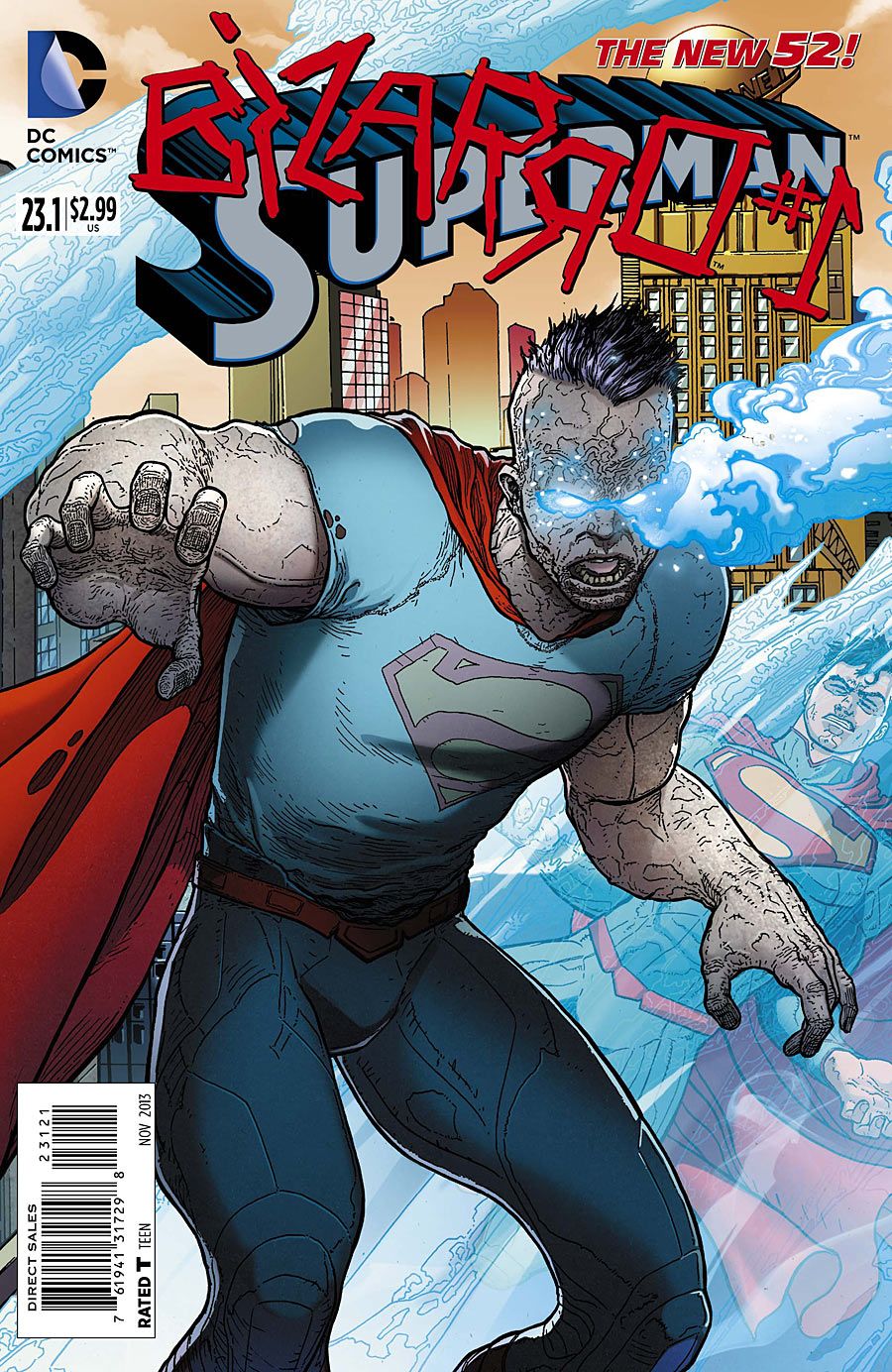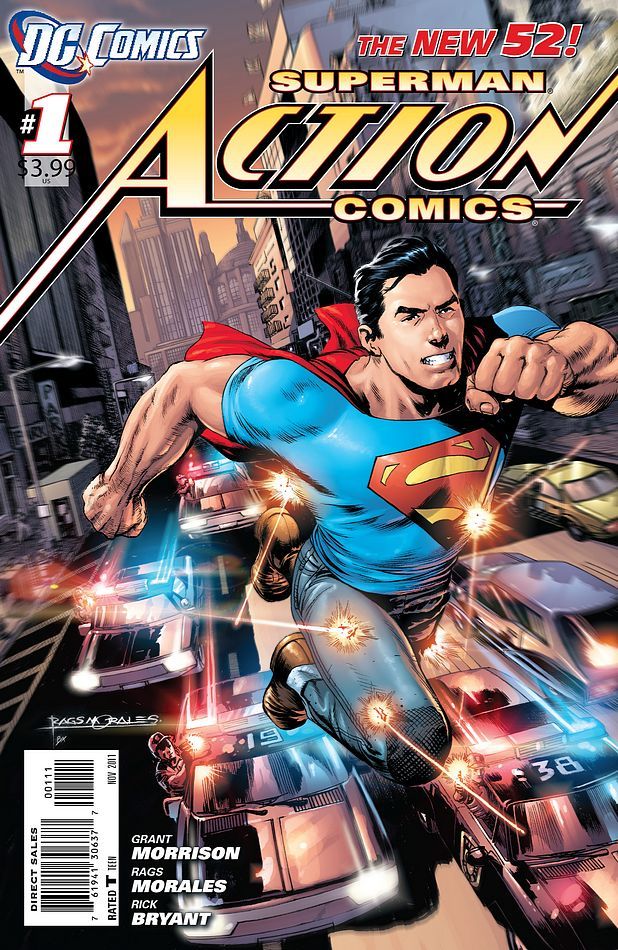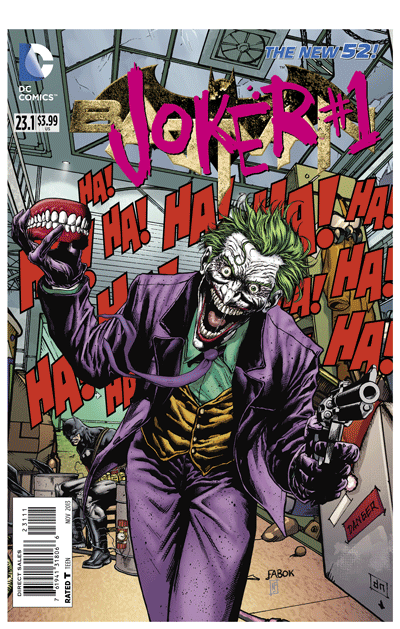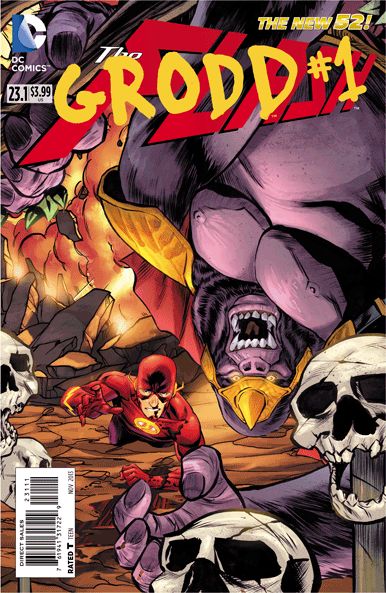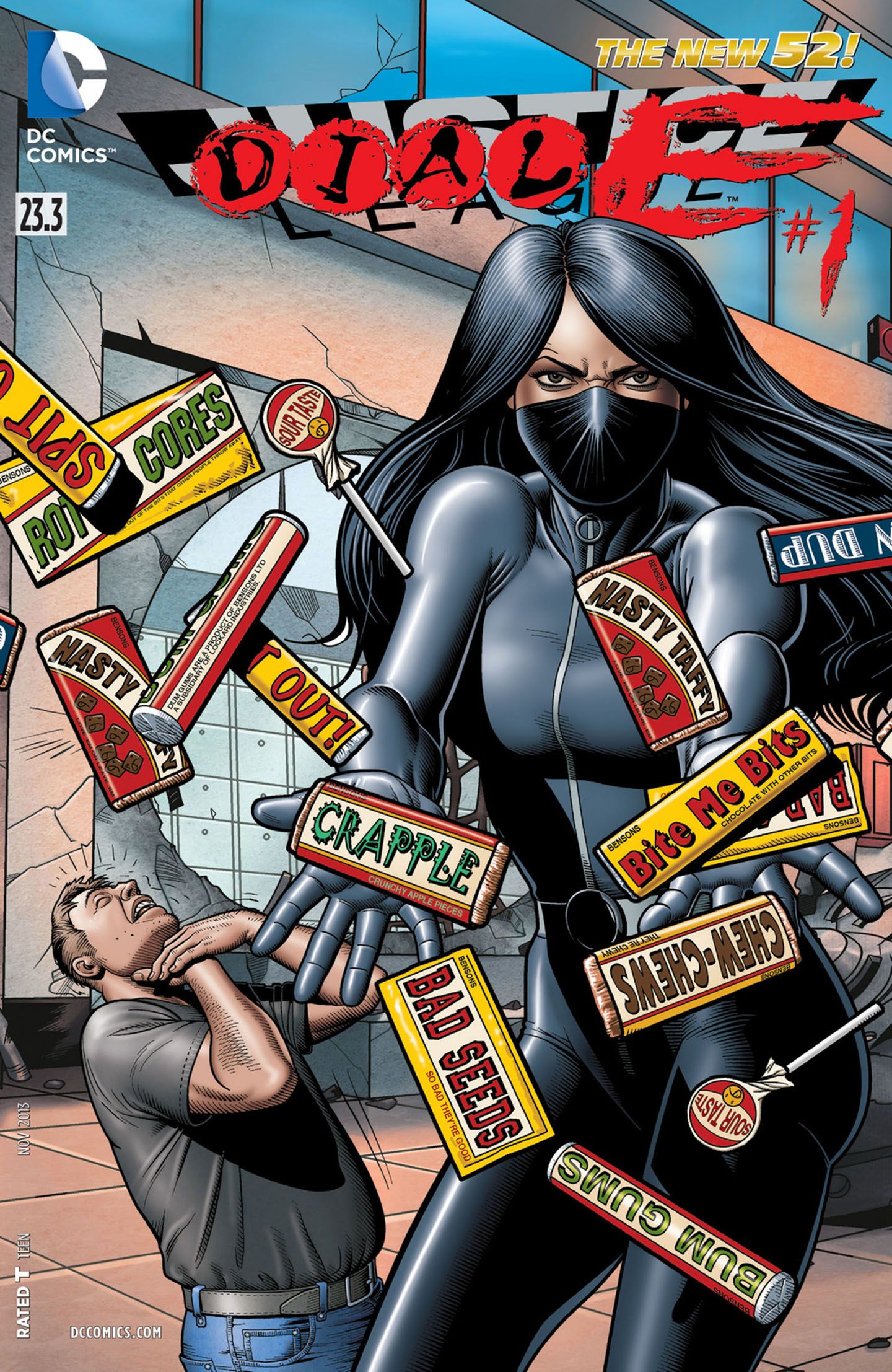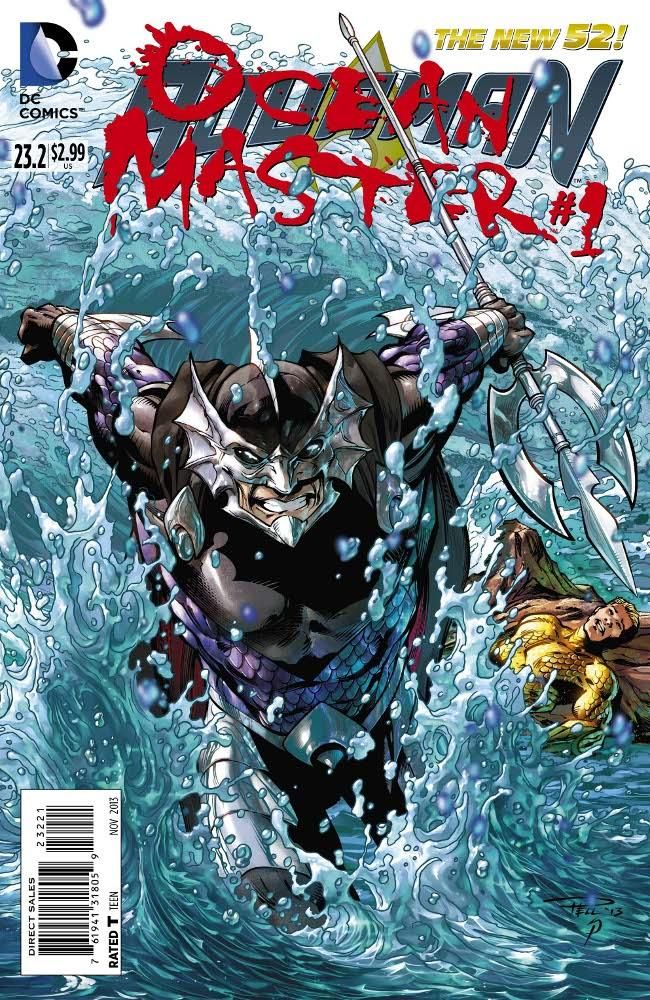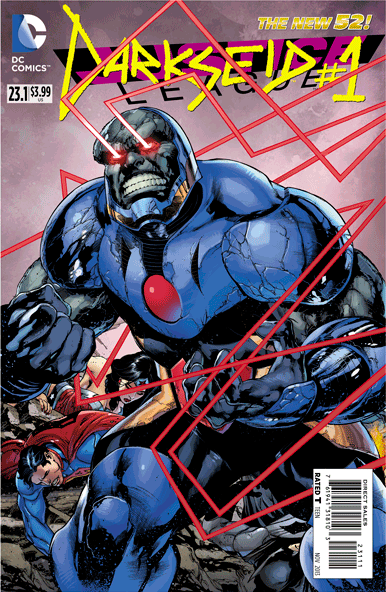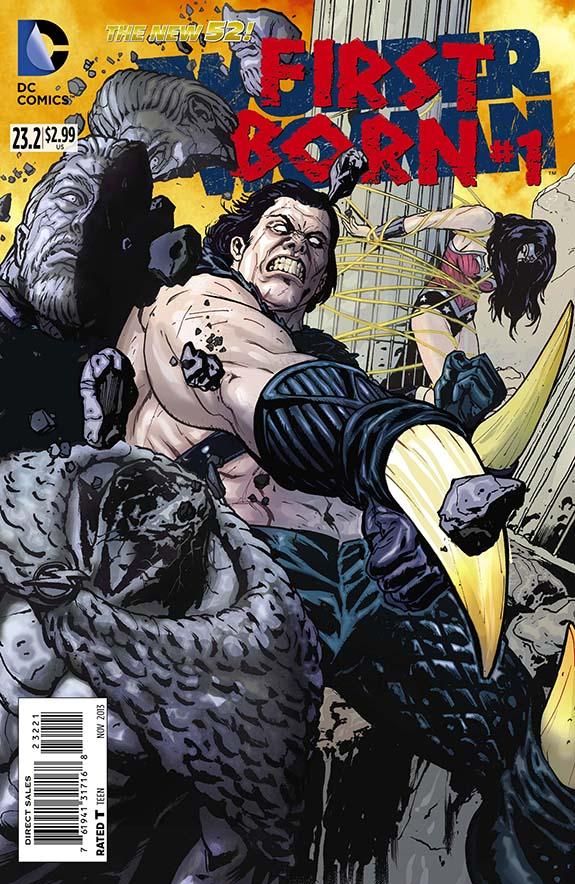When DC Comics announced Villains Month, it got people talking and not always in a good way. For every person saying it was a cool idea, there seemed to be at least one proclaiming it a jump-off point for various series if not the entire New 52. Business as usual for comics fandom.
What was different this time was the additional complaints from retailers about the way DC handled the event. The extra time needed to create the fancy, lenticular covers meant that they had to go into production before DC knew how many copies it needed. And unfortunately, when orders came in, the publisher discovered it had estimated too low, which created problems with meeting demand.
Brian Hibbs wrote about the situation for Comic Book Resources as well as on his own blog, and CBR ran a roundup of general reactions from store owners, but now that Villains Month is behind us, I wanted to get a deep perspective from a retailer on what worked, what didn't, how readers actually responded with their money, and what lessons could be learned to make similar events less frustrating in the future. To that end, I contacted Mike Sterling, manager of Seth's Games and Anime/Ralph's Comic Corner in Ventura, California.
Sterling has been writing on the Internet about comics for longer than most of us. His Progressive Ruin blog has been running since December 2003, combining Sterling's sense of humor and love of comic book weirdness with sharp observations about the direct market. He manages what used to be called simply Ralph's Comic Corner, a shop that's been active since 1980, but was purchased in 2009 by Seth's Games and Anime. Sterling remains manager while the titular Ralph still handles the old comics business. It was because of his long-standing knowledge of comics retailing and his ability to be equally funny and frank when discussing it that I asked Sterling to talk with me about his experiences with Villains Month.
Michael May: Tell me a little about special events in general from DC and Marvel. What effect do they typically have on your sales and how important are they to the success of your business?
Mike Sterling: The big problem with special events is that they're no longer so "special" -- with crossover events leading into crossover events into yet more crossover events, with customers split between "excitement" and "well, here we go again." By and large they don't have that big of an impact on sales. Books that tie into the event may experience a slight bump upwards, and if the event has a separate primary mini-series that acts as the trunk of the event, those usually do well.
The only time special events have huge impacts on sales is when the general non-comics reading public somehow gets roped into heading into the local funnybook store to buy something they saw on a news report somewhere. The "death of a superhero" event used to do this, but it's been done so often even the usually-credulous and non-critical newspaper articles now contain their fair share of eye-rolling when another superhero allegedly super-kicks the bucket. The last major event to get significant numbers of the nonconverted into shops was DC's New 52 relaunch, which received enormous attention, though the recent release of The Star Wars based on George Lucas' original scripts did get several new faces popping through our doors.
How do variant covers typically impact your business? Do you have a large market for those?
They're not a huge impact on the business, as they're generally a niche market within a niche market. The rare-ish ones, like with the 1/100 availability ratios, do help the bottom line a bit when they sell for premium prices, thus subsidizing the initial extra cash layout for those titles requiring higher order numbers but may not sell out right away.
There is always, of course, interest in specific variant covers on a case-by-case basis. The dozens of black-and-white "sketch" covers DC has done over the last couple of years are of little to no interest, but everyone wanted those Spider-Man 2099 variants for Superior Spider-Man. There's always demand for the Adventure Time variants, but the My Little Pony variants are slow-movers. You never know what variants are going to catch whose fancy.
Can you walk me through the timeline of how DC rolled out Villains Month? Did they announce the concept at the same time as they revealed the cover gimmick?
To be honest, I don't entirely remember the sequence of events, beyond hearing just prior to seeing the solicitations that they were going to do a bunch of villain one-shots, and, oh, the covers are going to have a 3D effect. I feel like I heard about these things at about the same time.
What was your initial reaction to the concept of substituting the September issue of each series with multiple, villain-focused issues?
Well, I was generally okay with it, with my reaction split between the comic fan in me ("Oh, those sound like fun!") and the retailer in me ("Gee, great, can't wait to figure out my order numbers on these"). That latter reaction sounds more serious than I actually felt. It's more like, well, there go the publishers, making my life more difficult again! Whaddaya gonna do?
What were your customers' reactions?
Our customers took it in stride, if they paid attention to the news at all. One thing that is overlooked particularly by the online comics fandom is that not everyone is IN online comics fandom. A significant percentage of people who actually go into comic book stores and buy comic books seem to get their comic news the old-fashioned way: looking at a comic rack filled with new comics. But the customers who were in the know seemed to be with me in my own mixed feelings: a sense of excitement and interested paired with the bemused reaction of "well, here we go again!"
What were the reactions to the idea of the lenticular covers?
I thought it sounded neat, as I'm sure most people who were aware of them did. And, as per the response to the previous question, some customers weren't even aware that there were going to be comics with lenticular covers 'til 1) I told them, and 2) they saw them on the rack. People weren't thrilled that they were going to all be $3.99 each, but customers by and large don't like that $3.99 price point anyway.
Brian Hibbs and other retailers have talked about this some, but can you describe your ordering process for me? How do you determine how many copies of an issue you're going to order?
A lot of it is based on sales history. I have records of sales for most of our comics, so I generally know how many copies your typical issue of, say, Batgirl will sell from month to month. And then I have to adjust for multiple factors, like creative teams, or if it ties into something, or if its an anniversary issue, or if it has a cover gimmick of some kind, or if there's a significant guest star, or what time of year it is (comic sales can have seasonal variations!), and so on.
What happened with Villains Month that made it challenging to order correctly? Can you explain what allocating is?
I went into specific detail on Progressive Ruin, but in short, the biggest problem I was facing in ordering these titles was not knowing if our regular customers were going to buy issues based on the title, or on the character featured. I know what I usually sell on Justice League, for example, and I know what I sold on Dial H, and there is a pretty significant sales gap between the two titles. One sells tons of copies, the other barely was a blip on the sales radar.
Now, how was I supposed to order the Justice League: Dial E issue, given that it was essentially an epilogue to the Dial H series and not necessarily of interest to regular Justice League readers? Do I order high, assuming Justice League fans will pick it up regardless, or order low, assuming those fans will skip it? My ultimate decision, after weeks of waffling, was to err slightly on the side of "high-ish" -- not as many as I'd normally order on Justice League, but enough to more than cover expected sales. Had everything gone as planned, this was the one issue I expected to take a bath on.
In addition, I passed out a questionnaire to our pull list customers, asking them which specific Villains Month issues of the Justice League titles they wanted, in order to give me a better idea of potential sales. (Turned out most of them wanted to skip Dial E.)
Most of the titles weren't that problematic, since the featured villains were at least within the usual oeuvre of each series. The Ocean Master issue of Aquaman was likely to appeal to the regular readers of Aquaman, I assumed. I generally ordered enough to cover our typical sales on each book, plus extras to cover increased interest garnered by 1) being part of an "event," and 2) having cool-looking 3D covers.
The allocations on these titles occurred when, due to the extended lead time required to produce the lenticular covers, DC had to set print runs before getting final order numbers from retailers. In an odd sort of schadenfreude-esque way, hearing this pleased me a bit in that someone at DC had to agonize over ordering these things like I did.
As it turned out, those print runs were, in many cases, not nearly enough to cover all the orders received. Thus, DC had to parcel out percentages of those orders to retailers. To quote DC's own press release:
"…We decided to institute a system across the entire 3D line that was in accord with previous retailers’ ordering patterns to minimize the impact of fringe speculators."
So theoretically, if I ordinarily ordered a lot of Batman, I would be given an increased preference of higher allocations of the BATMAN Villains Month issues. If I ordered 10 times the usual amount of the Villains Month Aquaman issues than I normally did of the regular issues from that series, my allocations of those issue would more closely resemble my regular orders. Of course, this is all relative. I normally order lots of Justice League comics, but my allocation of the Lobo entry was, well, fairly pathetic. But it was probably on the high end of the allocation scale, since I'm sure orders for that comic far outstripped the print run DC set for it.
How did allocations actually affect your store? What did you end up getting?
Orders for eight titles were unchanged. Eleven books had orders cut in half, or more. Others were cut by only a couple of copies and all the way up to as much as a third. And, in the case of Justice League #23.1 (the Darkseid issue) I actually received more than I ordered, which means that DC anticipated much higher order numbers than they actually received for that specific issue. And just last week I received a few more copies of the Killer Frost issue above and beyond my original allocation, so somebody must have turned up more copies somewhere.
How were sales on Villains Month overall?
Sales were great, all things considered, and once word started to spread that these items were in short supply, the rush to find the 3D covers was on. As the weeks went on, more and more people started waiting outside the front door Wednesday mornings, with a lot of people fast-trotting to the new comic racks to get their hands on them. Fortunately, I didn't have the shoving or fistfights I was hearing about at other shops!
Had all things worked out like they should have, with DC able to fill all orders, I would like to believe my actual order numbers would have sufficed for the demand I anticipated. However, since I didn't anticipate DC not being able to hold up their end of the transaction, there was no accommodating the increased demand caused by everyone knowing the items were in limited supply. If there wasn't a shortage, would there have been as much demand? Would there simply have been a general bump in interest just from people seeing the 3D covers and thinking they were neat, as opposed to the frenzy we saw?
One phenomenon I noticed was some customers passing up the regular 2D covers DC offered to make up for the shorted 3D covers. Once they saw what the 3D covers looked like, it was 3D or nothing. On the other side, I had several pull list customers specifically request ONLY the 2D covers, since at $3.99 a pop (even with their pull discounts included) these added up pretty quick.
I also lost a lot of sales from new faces who popped into the shop looking only for 3D covers and nothing else. Yes, these were small, short term losses, but had the books been available, who knows? Maybe they'd remember we had something they wanted when they were looking for it, and they'd come back. Or maybe if the books had not been shorted to everyone, I never would have seen those customers at all. Lots of "what ifs" I've been thinking out here.
What do you hope DC learned from this experience?
I hope DC learned that they'd better be able to provide the products they offer. The next time they have some kind of sales gimmick that requires guessing what retailers will order because there isn't enough lead time to gather actual orders … maybe they can wait on offering said sales gimmick.
And what have you learned?
That there isn't a silk purse the comics industry can't turn back into a sow's ear. But that's a lesson this business drummed into me long ago. I mean, yes, we certainly made money on this 3D cover event, but we could have made more money, and made more customers happy, instead of turning this into some kind of competition of "can I get to the comic shop fast enough to get the covers I want?" It went from what could have been a fun thing to a frustrating thing we all had to endure, and that's no good for anyone.


